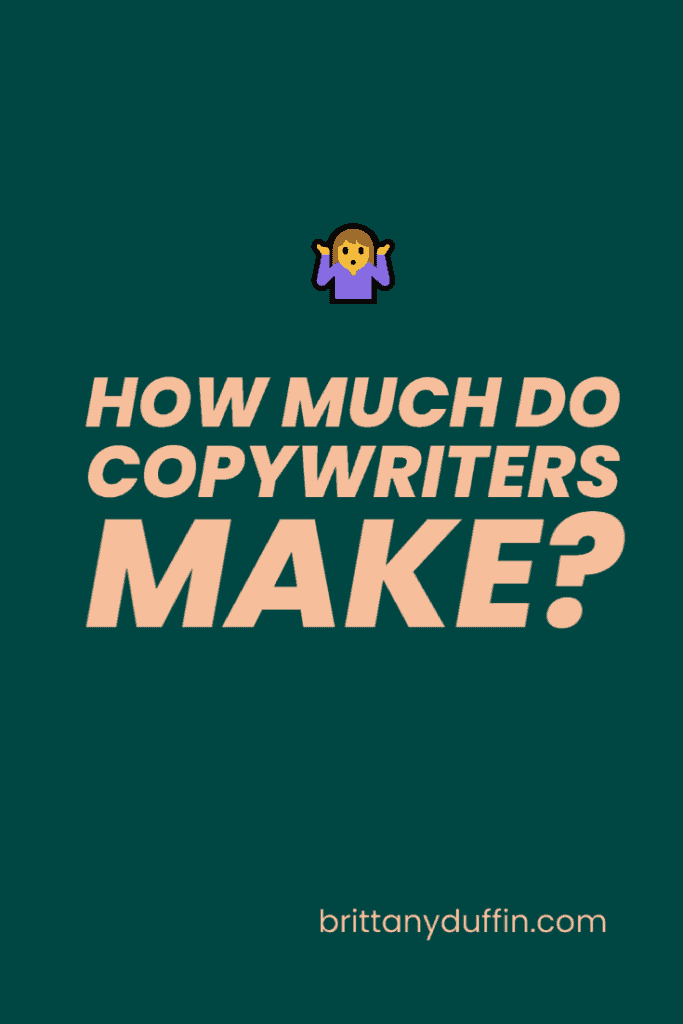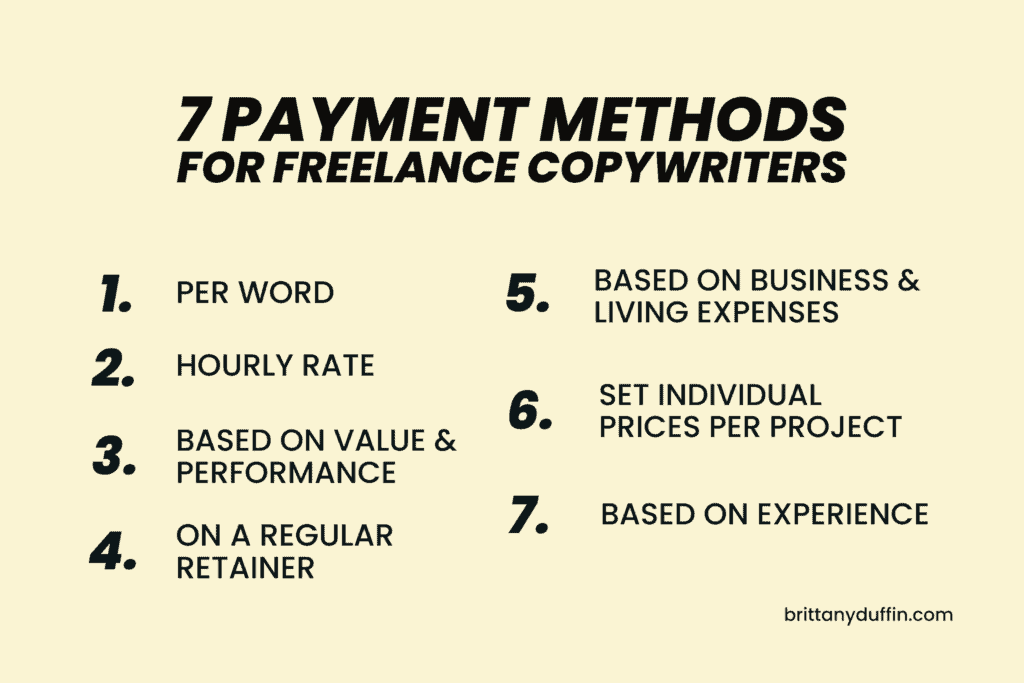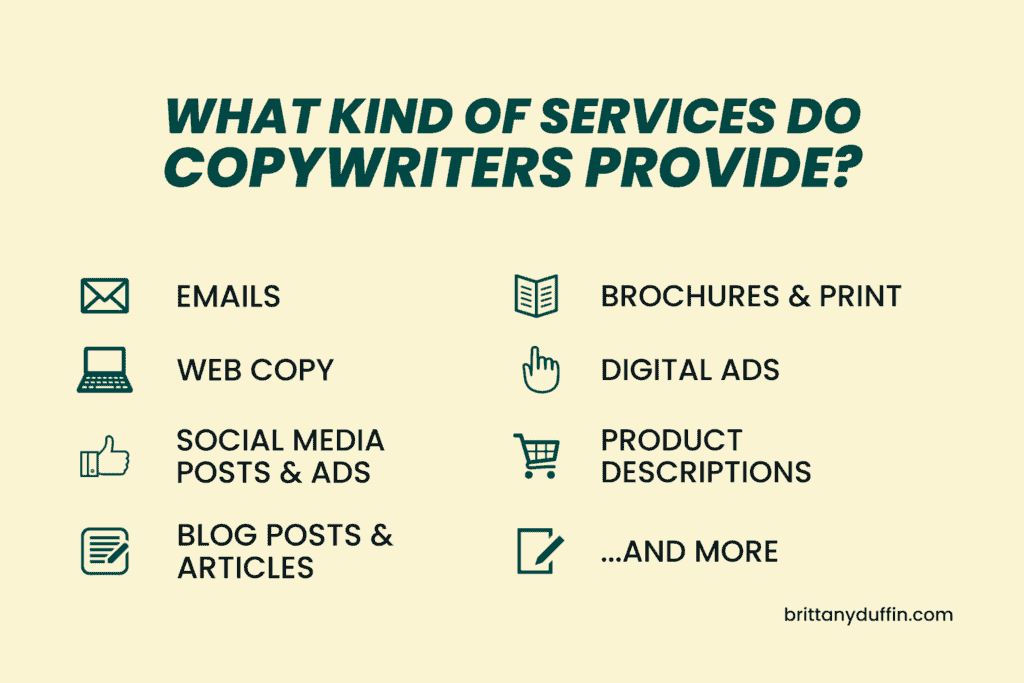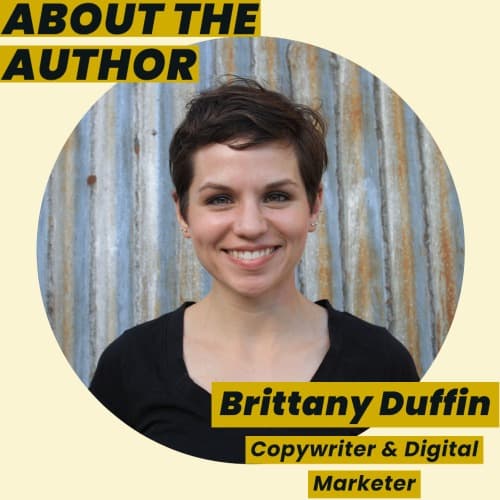For brands deciding whether or not to hire a copywriter — and decide who to hire — the financial investment is a big part of the equation.
How much does it cost to hire a copywriter? Will this fit in our marketing budget? What is the copywriter rate for a good copywriter compared to a less experienced one?
These are important questions. Not only does rate transparency create a better business relationship between the freelancer and client, but I also believe that pay transparency is one of the best ways to combat gender and racial wage gaps, which is an issue close to my heart.
More people should be talking openly about money!
But unfortunately, this isn’t an easy question to answer. The cost of hiring a copywriter will depend on so many factors.
In this article, I’ll outline some considerations when deciding how much a copywriter should cost, and how to select the right copywriter for your team.

How much does it cost to hire a copywriter?
You might be frustrated to find that most freelance copywriters for hire do not immediately post their rates on their website.
There are a few reasons for this:
- Freelance copywriter workloads fluctuate, and therefore so do their rates. An in-demand copywriter will have to raise their rates and focus on high-value clients; it just makes good business sense.
- They want to understand project scope before putting out a number. Every client will have different expectations for timelines, research, deliverables, etc. and freelancers want to make sure they understand those expectations so they can price the project accordingly.
- They want to compete for your business based on their value and the experience they bring to the table, not price. You get what you pay for!
If you are just looking for a ballpark answer, here are some trusted resources to help you budget for copywriting services.
These organizations conduct regular surveys on self-reported freelancer income data to crowdsource the market price for copywriting services:
- Editorial Rates posted by the Editorial Freelancer Association
- “Get Freelance Writing Rates” by The Balance for Small Business
- State of the Industry Report on Copywriter Rates and Top Performing Marketing Methods by the American Writers & Artists Institute (AWAI)
- Payscale.com or or Glassdoor.com
Some limitations of these resources are that it’s not always clear when the information was collected or how it was self reported.
But from here, you can create some baseline expectations and adjust according to your unique business case.

How to choose the right freelance copywriter payment model
Once you have an idea for how much a freelance copywriter might cost, you can start asking for some quotes!
In this process, you might wonder how the heck we got to a certain number.
All freelancers will have a different payment model to quote a particular project.
Here are some payment models you might come across, and how to choose which feels right.
Payment model 1: Expense-based
Let’s get this one out of the way.
You’ll meet several freelancers who set copywriting prices by working backward from how much income they need or want to make that month, and how often they want to work.
This expense-based approach requires the copywriter to add up their total personal and business expenses, divide by how many hours they want to work, and use the final figure, or target income level, as a basis for their pricing.
Doing these calculations is important for freelancers, because of course their income must cover at least basic expenses to be worth their time and effort.
Freelance copywriters need to take into consideration that they are taxed at a higher rate than their traditionally employed counterparts, and are responsible for their own overhead costs (equipment, office space, etc.) and health insurance.
However, it’s my belief that my client shouldn’t be responsible for my standard of living.
In the same way that you wouldn’t ask your boss for a raise because you moved to a nicer house, I wouldn’t ask my clients to pay more or less because of my own personal expenses.
Why should a client based in Tulsa care about covering a freelancer’s outrageous San Francisco rent? Why should a client pay a higher rate just because a freelancer wants to work less?
Moving on.
Payment model 2: Per word
A “per word” pricing model means that the freelancer writes a blog or article, and charges you based on the total number of words in the final draft.
Or, you provide a desired word count for the final deliverable, the copywriter charges per word and provides a final deliverable within the specified word count.
This pricing model is uncommon because it originates from print newspapers. They had to fit an article within a given (limited) space on the printed page, and the reporter had to fit their story in that space.
This is outdated now that most copywriters are writing for web, where space and word count are not so strictly monitored.
While word count is helpful to clarify the project scope (and some digital ad formats, like paid search headlines, require certain limited character counts), it isn’t correlated with quality work and shouldn’t be the basis for the entire project price.
Without clear word count parameters in place, this payment model potentially penalizes the copywriter for good, succinct work, and potentially penalizes the client by rewarding fluffy, long-winded writing.
I believe that brevity and conciseness are crucial writing skills.
And anyway, it has been consistently debunked that web copy length impacts SEO; rather, the user experience and the ability to answer the user’s question is what matters.
Payment model 3: Per Hour
Another way a freelance copywriter might price a project is based on how many hours they think it will take them to complete, and multiplying that by a desired hourly rate.
An hourly rate model might make sense for a copywriter doing predictable, consistent work, for example, writing 30 new product descriptions per week, or three blog posts per month.
They know how long it will take them because they’ve done this work before, therefore, they can provide an accurate cost quote.
The problem with this pricing model is when the scope of the project changes, or the project takes longer than originally expected.
You have to trust the copywriter to accurately track their time, and also notify you if they anticipate something taking longer than necessary.
Another thing to keep in mind, is that a very skilled copywriter can likely work faster than a more junior copywriter.
And a more experienced freelancer might work more efficiently than someone new to freelance work.
So even if their hourly rate is 3X higher, they might work fewer hours overall.
When getting a project quote, you will need the hourly rate, the expected number of hours for the project, and a general understanding of how time is being tracked.
Payment model 4: Value-based
A value-based pricing approach would set the pricing according to the value that the company receives from the project.
This one sounds the most reasonable but is probably the most difficult in practice.
There are so many factors that play into the performance of a marketing campaign, and the value of the marketing copy alone is not so easily quantifiable.
Plus, most freelance copywriters don’t have visibility into the “results” of their client work.
Payment model 5: Experience-based
This is another tricky one.
This is where the copywriter will set their prices based on their “experience.”
If this is the case, I would encourage you to clarify what experience they have.
Are we talking experience in number of years as a freelancer? Or as a copywriter in general? Or experience writing for this industry or area of expertise?
Number of years experience doesn’t tell the whole story of their experience, and I’d caution against ageism here.
Copywriters should make sure that, regardless of how many years they’ve been working, they’re keeping up with best practices in SEO, social media and digital marketing trends.
While these disciplines are often more intuitive for younger writers with fewer years of experience under their belt, it doesn’t mean that an older copywriter hasn’t been keeping up with their skills through practice, formal training or general tech savviness.
Instead of assigning a price directly based on the experience level of the copywriter, think of this as a way to determine where in the pay scale this freelancer would land, along with other factors.
Payment model 6: By project
This is where a copywriter will have a general price range for various projects, for example, this is how much I charge for: a blog post, an email, etc.
This is what I consider to be the fairest pricing model for copywriting work for both the client and freelancer, and the one that I use in my freelance business.
It’s a win-win for everyone because, similarly to the hourly rate, it packages all of these considerations (freelancer skill and experience, specialization and area of expertise, project scope, etc.) into one neat price.
The client knows exactly what to expect when they receive the invoice.
The freelancer doesn’t feel pigeon-holed by an hourly rate, and no one has to track their time.
It simply doesn’t matter how long the project takes.
The only problem that I find with this payment model is that each project has to be renegotiated.
But I find that when I work with clients consistently, we are able to come to a mutual understanding on project pricing based on previous work.
Payment model 7: On retainer
Another great payment model is a combination of an hourly rate and by-project pricing: a retainer schedule.
This is when the client “reserves” a certain number of hours per week or month of the freelancer’s time, and can assign projects as needed.
Or, clients can commission a freelancer for a project deliverable on a regular schedule, like for blog posts, emails and social media.
This is great for you, because you get consistent access to a copywriter and can easily budget the monthly retainer fee into your marketing budget.
Freelance copywriters like this, because they know exactly what to expect from their workload and income, and can make sure they have time reserved every month for this particular client.

Understanding freelance copywriter price ranges
Now that you have a general understanding for how much to budget for a freelance copywriter, and some ideas for how the payment schedule will work, here are some other considerations for why a freelancer might charge more or less for the same work.
Reasons to charge on the high end of the price range:
- Client is requesting a rush turnaround time
- The freelancer doesn’t have a personal interest in the project or industry
- The freelancer is currently experiencing a high volume of work
- You have proven to be a difficult client to work with (It happens!)
- The project is complex, for example, it requires more research than usual or several rounds of edits
- The freelancer specializes in this work and is confident that they provide high value work
Reasons to charge on the low end of the price range:
- The project is standard or low complexity
- The freelancer currently has a slow workload
- The project is ongoing or will lead to more work in the future
- The freelancer has a positive relationship with the client or a special passion for the work
- The project is outside of the freelancer’s area of expertise
These are just a few examples.
There are a ton of factors that go into a freelance copywriter rate, so it’s worth having a conversation to understand the pricing.
Conclusion
How much to pay a copywriter is not an easy question to answer, and depends on several different factors, including the freelancer’s current workload, experience, client relationship, and the scope of the project.
My best suggestion is for both the client and the freelancer to ask a lot of questions about the project and process in order to get the most accurate quote where both parties are happy with the fee.
If you’re looking to hire a copywriter and are curious about my own copywriter freelance rates, you can contact me.

My name is Brittany, and I have 10 years of experience in copywriting and digital and direct-response marketing.
I’m here to help you sharpen your writing skills and enhance your marketing messaging. When I’m not brainstorming the next best subject line, you can find me watching scary movies, skating, and taking pictures of my food.